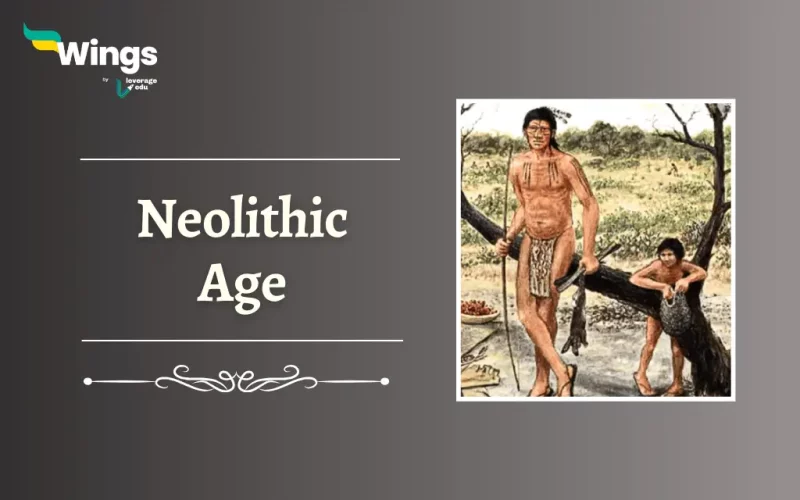The New Stone Age is the Neolithic Age. During this time humans learnt another great lesson that has stayed with them through time. They were shifting from a nomadic life towards a more settled life with agricultural practices. The Neolithic period evidence in India began around 7,000 B.C. to 1,000 B.C. Let’s explore more about this revolutionary era!
Also Read: The 16 Mahajanapadas: History, Importance and Impact
Origin of the Neolithic Age
Table of Contents
Neolithic age began in the world at different times. That is why the beginning of this age in different areas of the world is very different. Even in India, some neolithic settlements are from 2,500 B.C., some sites in Eastern India and South India are from 1000 BC and a few found near Vindhyanchal ranges are even from around 5000 BC. Though humans began to explore agricultural practices towards the end of the Mesolithic period, it is still one of the largest distinguishing factors between the Palaeolithic and Neolithic ages.

Characteristics of the Neolithic Age
Gordon Childe is an Australian archaeologist who has referred to the Neolithic age as a ‘revolution’. It is because of the major changes in their feeding habits, lifestyle, work and settlements of humans during this time period, which made him make this statement. Some of the major characteristic changes that occurred during the Neolithic age are mentioned below.
Also Read: A Complete Roadmap to the Discovery of Fire
Agriculture
Ragi, horse gram, cotton, rice, wheat, and barley were being grown by humans on their own. This was a major shift in their carnivore diet which was earlier based on hunting and gathering. Hence, hunting was reduced in scale but continued in the same pattern. Humans also started to rear animals like sheep, goats, camels etc. Agriculture also pushed them towards building planned settlements with adequate land for cultivation and a safe living space in colonies. The archaeologist was not exaggerating to call it a revolution after all!

Tools
The tools of the Neolithic age were not centred around hunting etc, but those which would help humans in tilling and ploughing the land and help carry out agricultural activities. Alongside the blades developed earlier, they also started using polished stone tools. The tools were now more sophisticated and handy. They were also made sharper and more reliable. However, the basic structure more or less remained the same. There were arrows, spearheads, ploughs and diggers to carry out the tasks.

Also Read: Types of Vedas: Important Features & Details
Livestock Rearing
The animals that were earlier hunted for food were now reared. The wild boar evolved into domesticated pigs and the Persian ibex evolved into goats. They also learnt to use the domesticated animals for physical labour involved in agriculture. Moreover, animal milk, meat and skin also continued to benefit humans. Nevertheless, humans were exposed to diseases like smallpox, influenza and measles while being close to animals.

Relevant Blogs
| Palaeolithic Age | Mesolithic Age |
| Major Climate Change after Ice Age | Arab Nationalism |
| All The Names of India Throughout History | Tribes of India |
| Gupta Empire | Post Mauryan Period |
This was an outline of the major developments in the Neolithic age. If you want to read more articles like this, you can visit our general knowledge page on Indian History!
 One app for all your study abroad needs
One app for all your study abroad needs













